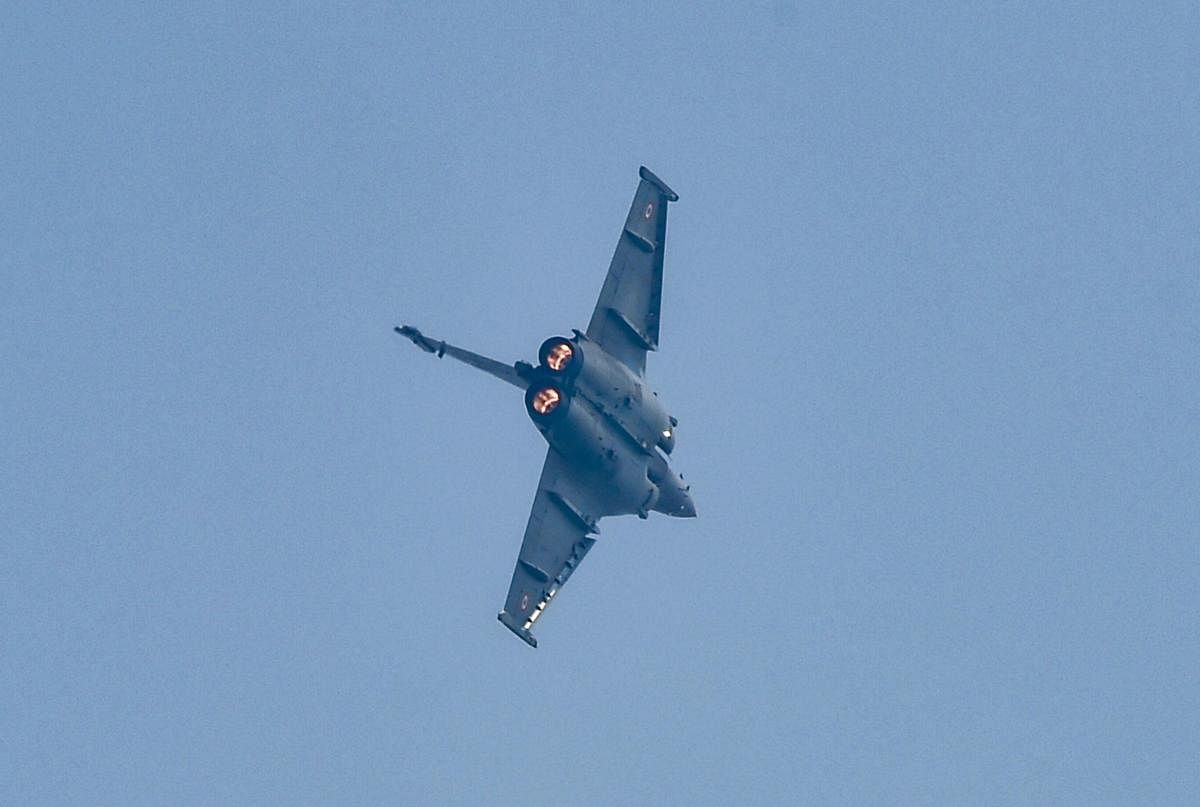
The induction of the Rafale fighters into the Indian Air Force has added significance given the current India-China border crisis. The Rafale will signal a boost to India's overall combat capability and preparedness. The IAF was not used during the 1962 conflict. Now, it could be a game-changer.
India’s air power has evolved over the decades. The induction of the first five Rafale fighters has added to IAF’s strength, given that these aircraft are among the most advanced combat aircraft in the region and the world. When all 36 on order from France arrive, they will make up two highly potent IAF squadrons.
The changing geopolitical environment in Southern Asia and particularly in India’s immediate periphery warrants New Delhi to keep its strike and combat capability at a higher level and in readiness in order to face any eventuality. The acquisition of Rafale is a morale booster in these times.
The Rafale induction was very much needed and long overdue. The reflection on defence preparedness will be pivotal to the maintenance of India’s national security. It will change the technological imbalance in combat aircraft that India was beginning to face in the neighbourhood. Pakistan acquired F-16 fighters from the US and Chengdu JF-17 from China, which are fourth generation combat aircraft. Both are central to Pakistan Air Force’s modernization plans. The effectiveness of the JF-17 and China’s much-hyped J-20 are yet to be witnessed. These have not been tested in any conflict.
The modernization of the IAF has been continuing and it has enhanced its operational capabilities over the years. A number of its existing combat squadrons have been upgraded since the early 2000s – the Jaguars, the Mirage-2000 and MiG-21 Bisons, for instance. The IAF now also has the Tejas Mk 1 Light Combat Aircraft (LCA).
Air power will remain a decisive factor in shaping the course and outcome of any conflict. Over the years, the IAF’s combat capability and strategic reach have increased significantly with multi-role aircraft. Since the 2000s, India has also inducted a number of force multipliers, including the Airborne Warning and Control System (AWACS), mid-air refuellers, and strategic lift capabilities. India has concentrated on acquiring modern technology either through acquisition from elsewhere or by upgradation of existing platforms.
The five Rafale fighters comprise three single seaters and two twin-seaters. These are now part of the IAF’s ‘Golden Arrows’ squadron. There is no denying the fact that these fighters will significantly boost combat capabilities. The IAF seems to have deployed its frontline fighter jets in key air bases near and along the Line of Actual Control (LAC) with China.
The IAF’s authorised strength is 42 squadrons. Unfortunately, though, India has not been successful in building up that many squadrons. A squadron is the basic fighting unit of the air force. The IAF’s fighter squadrons have 18 fully operational planes, including two trainers. Roughly 10 squadrons of the IAF are currently equipped with MiG-21 and MiG-27aircraft and these are scheduled to retire by 2024. Hence, the requirements for the IAF will increase manifold. Right now, the IAF has 28 squadrons which are fully operational. India had reached 39 operational squadrons in the early 1990s.
The Rafale is categorised as 4.5+ generation aircraft, with among the most sophisticated modern avionics and weapons complement. The French Air Force replaced seven types of aircraft with the Rafale. While the Rafale can attain a maximum speed of 2,200 km per hour, the J-20, which China claims to be a fifth-generation combat aircraft comparable to the US F-22, is estimated to have a top speed of 2,400 km per hour.
The Rafale is certainly far superior to the JF-17, which is derived from older MiG aircraft. But the technical parameters suggest that it is probably also superior to the J-20 in many ways. The Rafale, for instance, can travel a greater distance from its operating base and can cover more enemy area during a conflict. The veracity of the claims made by China with regard to the J-20’s ‘stealth’ capability is yet to be demonstrated and verified. India’s Su-30 MKIs have reportedly spotted their movements in the past because of the effectiveness of the radar mounted on the aircraft. If that is so, the Rafale’s radar is even more advanced.
While the Rafale’s induction will add to the existing capabilities of the IAF, it must be mentioned that both the JF-17, supplied to Pakistan by China, and the J-20 are also multi-role combat aircraft and they, too, can perform day/night roles. The technical parameters suggest that they could be effective during air-to-air attack, air-to-surface attack, aerial reconnaissance, interception and anti-ship strikes. The Rafale’s superiority comes in part from its AESA radar as well as smart weaponry. It can carry almost all existing advanced weapons, and it has superior electronic warfare capabilities.
The Rafale certainly will be a game-changer during any eventuality India has to face as it heightens military preparedness and confidence. The geopolitical environment in Southern Asia warrants that India keep itself alert and send a deterrent message to its adversaries.
(Arvind Kumar is Professor of Geopolitics and International Relations at Manipal Academy of Higher Education, (MAHE), Manipal; Seshadri Chari is a well-known political commentator and strategic analyst)
